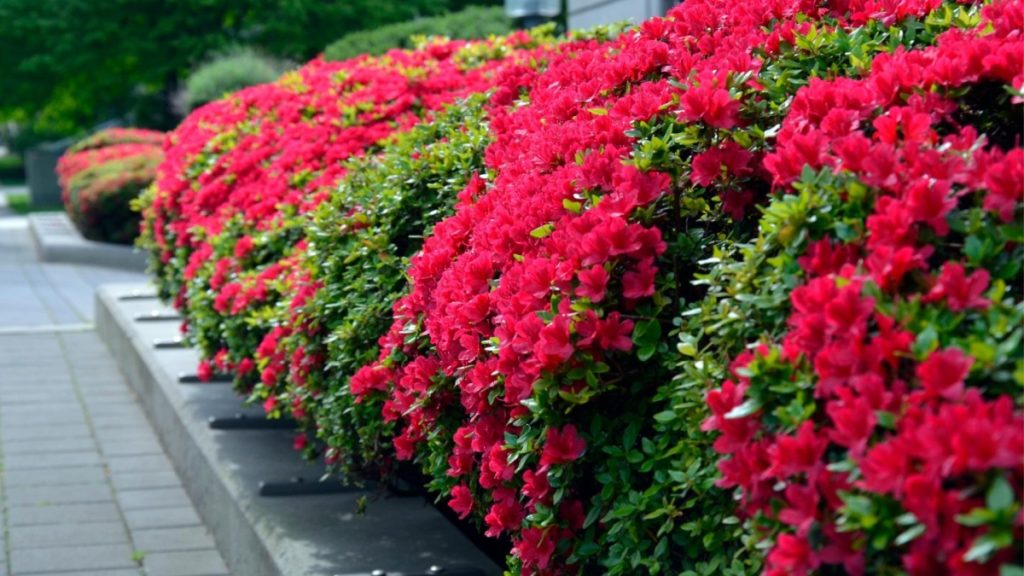
Shrubs of the Northeast may stretch north to the Canadian maritime provinces, west to the Great Lakes and south to northern Tennessee and Virginia. Some species of bushes may differ with the landscape while others do well throughout the region.
The Northeast region consists of plains, ancient mountains, river basins, rocky outcropping, sandy beaches and much more. The backyard meadow garden of the Northeast has trees and shrubs around the perimeters to offer sights for nesting, offer protection and food for wildlife.
Although landscaping serves an ornamental function attractive to the human eye, it also serves to attract various forms of wildlife. There are many plants of ornamental value which also are attractive to song and game birds, as well as to other varieties of wildlife. Shrubs of the northeast in your wildlife gardens will do just that.
As habitat continues to shrink, your wildlife gardens become more important. Giant oaks, maples and White pine give way to birch and sassafras trees. Trees give way to shrubs and so on.
Shrubs of the northeast offer important food sources for bees, birds, butterflies and their larvae. Nuts and berries feed rabbits, deer, fox and a host of critters. Birds and animals deposit seeds elsewhere, spreading the species and helping wildlife and us.
Spicebush (Lindera benzion)
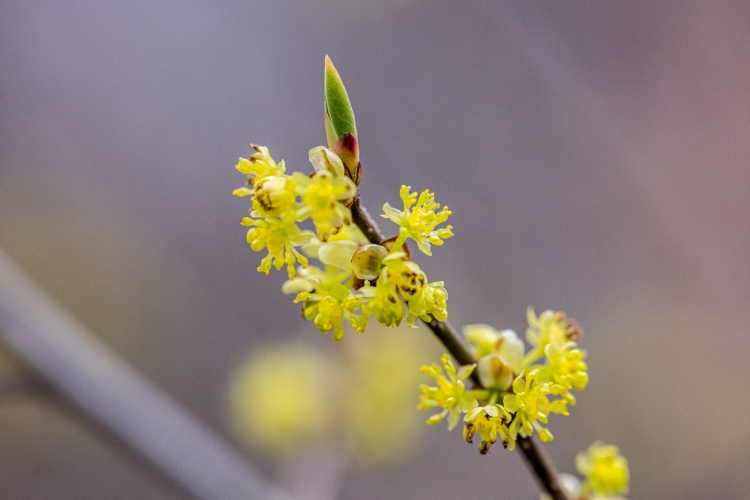
Spicebush can be found growing wild throughout most of the Northeast and Southeast regions.
- An early spring bloomer with a haze of yellow while.
- The first bees of the season welcome these shrubs of the northeast to your gardens.
- Spicebush bears male and female flowers on separate plants.
- To insure berries, have at least one male for every few female plants.
- Native habitats include flood plains and woodland streams, however they are tidy shrubs in the wildlife garden, growing from three to 10 feet tall.
- It does well in Zones 4 – 8 with filtered sun or partial shade.
- Berries are a valuable food source for Wood thrush, veeries, quail, grouse, cardinals and other fruit eating birds.
- Rabbits and deer may browse on the twigs and it is only one of two known plant species to host Spicebush swallowtail butterfly larvae (the other is the sassafras tree).
Bayberry (Myrica pensylvanica)
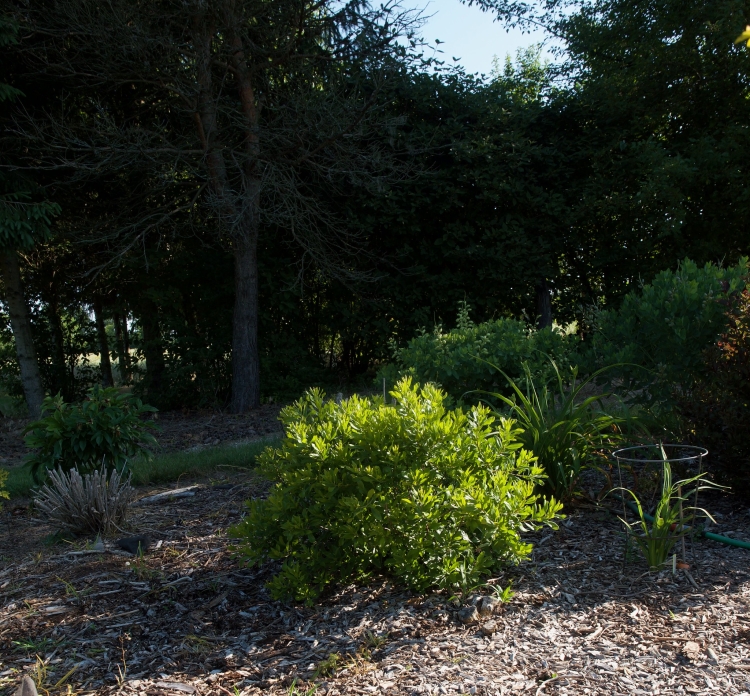
Grows wild along sandy lakeshores and dunes. Native shrubs of the northeast that thrive in dry conditions.
- Bayberries also bloom on separate male and female plants. One male will take care of up to 10 females for berry crops.
- It is best to buy plants when they are fruiting so you can make proper choices.
- A plant with four season attraction will grow to four feet and requires full sun.
- Berries are a favorite of migrating trees swallows and fruit eating birds. Any remaining fruits are often taken care of in late winter by bluebirds and Yellow-rumped warblers.
- Bayberry is a very hardy plant in Zones 2 – 7.
Highbush blueberry (Vaccinium corymbosum)
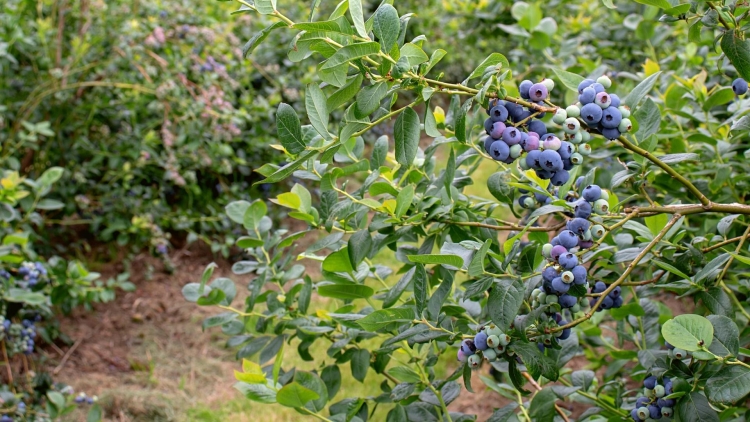
The native range of these shrubs (the “wild blueberry”) can be found throughout the Northeast and Great Lakes regions.
- A favorite with black bears, chipmunks and other mammals. Don’t forget blueberry pies and preserves for us humans as well.
- Highbush blueberry prefers a rich, moist acid, soil and are often found growing wild in bogs, swamps and wet grounds. They’ve been known to invade old pastures and drier fields.
- They grow to 10 feet and need full sun but will do okay in partial shade, hardy from Zones 4 – 9
- These shrubs are pollinated by a variety of bees and for a better crop, plant more then one bush.
- Blueberries are desired by many fruit eating birds like Scarlet tanagers, bluebirds, cardinals, mockingbirds, catbirds and many other backyard birds.
Red-osier dogwood (Cornus sericea)
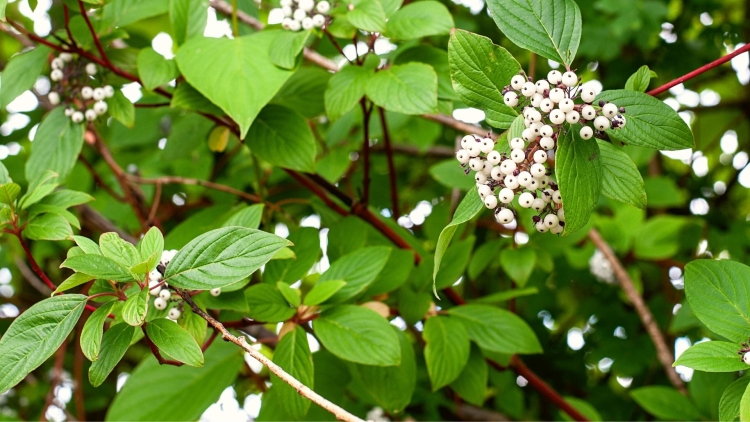
Common shrubs of the northeast that cover most of the United States and the lower portions of Canada are found wild growing along river banks and streams.
- Its cultivars are four season favorites to any wildlife garden.
- Red-twig dogwoods prefer moist acid soil but adapt well to gardens. Adding mulch can help retain moisture.
- Spring blooms turn to creamy white berries in July and August. Like all dogwoods, these shrubs of the northeast are favorites of wildlife.
- Small animals like the fruits as do several birds like robins, grosbeaks, Cedar waxwings, Wood thrush, wood ducks and other berry eating birds.
- Red-twig dogwoods also host larvae of the Blue spring azure butterfly.
- These hardy plants of Zones 4 – 9, do best in full sun and moderate to high moisture. They should be pruned to keep color and shape.
Winterberry (Ilex verticillata)

Native to the Eastern two-thirds of America and lower Canada, Winterberry can be found in swamps, marshes, river beds and coastal plains. They are very adaptable to drier conditions and gardens, however.
- Also called Michigan holly (it is a deciduous holly).
- Like all members of the holly family, they need a male and female plant to produce berries on the female (1 male for every 3 to 4 females).
- These shrubs of the northeast really come into their own in fall and winter when the clumps of red berries make it to the big show.
- Wild Winterberry can grow to 10 feet, but newer cultivars are shorter.
- Plant in full to partial sun and provide moderate moisture.
- Hardy from Zones 4 – 8.
- In the winter, berries offer food for mockingbirds, robins, waxwings and other fruit eaters.
- The foliage is on the menu for woolly bear caterpillars.
Highbush cranberry (Viburnum trilobum)
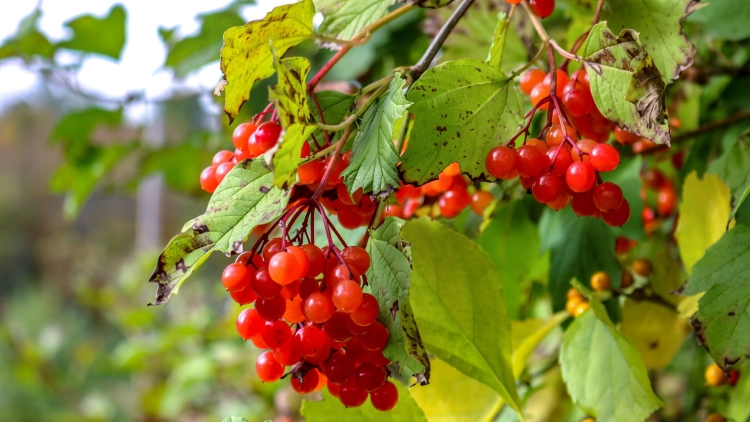
A tall, arching plant that is found growing near woods edge and swamps. Highbush prefers moist, rich soil and is grows freely throughout the Northeast and Great Lakes region.
- One of a large clan of native Viburnum’s that make wonderful shrubs of the northeast wildlife gardens.
- In May this viburnum is covered with white lace flowers and by fall the fruits turn a bright red and last through much of the winter.
- Chipmunks and other small animals may eat your fruits.
- Flocks of Cedar waxwings are known to strip bushes in a matter of minutes.
- Highbush cranberry is hardy from Zones 4 – 6, does well in full sun to partial shade and requires moderate to high moisture.
- These are native shrubs of the northeast woods and may struggle in hot humid conditions.
Serviceberry, Juneberry, Shadblow berry (Amelanchier spp.)
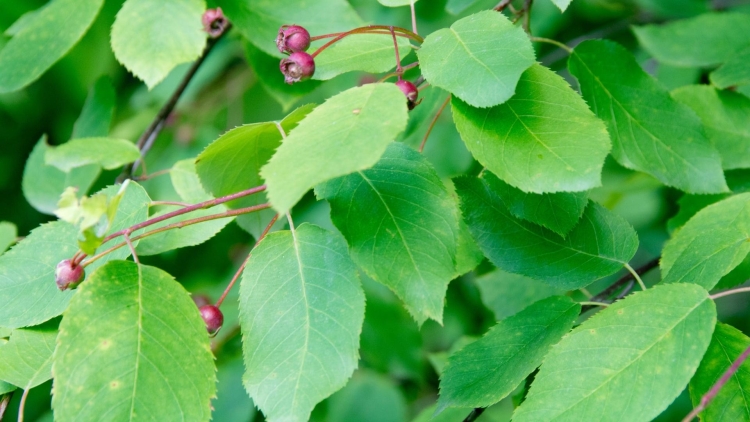
Different names for different parts of the region. Serviceberry are shrubs of the northeast and small trees that thrive in open woods and woods edge. They are found throughout much of the United States and lower Canada.
- Hardy from Zones 3 – 9, they do best in moist acid soil and prefer partial shade. Serviceberry make an ideal under story shrub or small tree.
- As fruits ripen in June, your wildlife gardens will come to life with birds and possibly mammals.
- Serviceberry are a favorite for bear, turkeys as well as people (if you can get them first).
- A major bird attractor, Serviceberry shrubs will attract bluebirds, robins, cardinals, catbirds, orioles and tanagers plus a host of other backyard birds.
- Serviceberry offer fruits in June, when little else is fruiting.
- This is a must plant if you have room.
Chokecherry (Aronia arbutifolia)
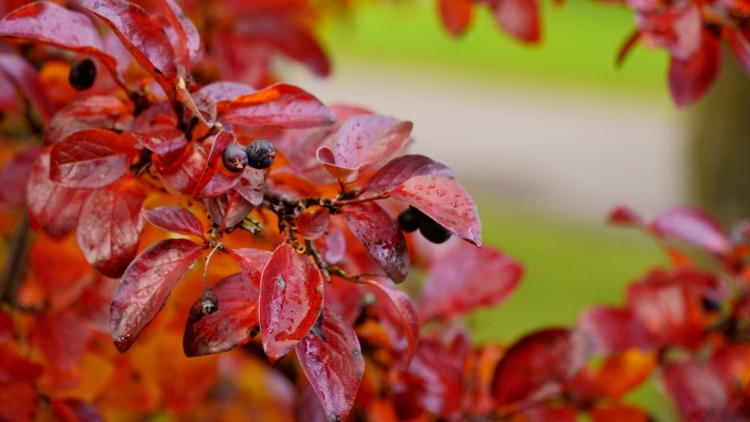
The chokecherry (Aronia arbutifolia) is a deciduous shrub that is native to North America. It is related to the more commonly known black cherry (Prunus serotina), but it is distinguished by its smaller size and white or pink flowers. Chokecherries are found in woods, hedges, and stream banks throughout the eastern United States and Canada. The fruit of the chokecherry is small and dark red, with a taste that ranges from sweet to tart. The fruit can be eaten fresh or made into jams, jellies, pies, and wine. Chokecherries are also used as a food source for wildlife, including birds, deer, and bears. In addition to its value as a food source, the chokecherry has also been used for medicinal purposes by Native Americans and early settlers. The bark and leaves of the plant were brewed into a tea that was used to treat fevers, colds, and diarrhea.
- From Zones 4 – 9 grow to 8 feet and host caterpillars(foliage), feed birds and small mammals with the fruits.
Elderberry (Sambucus canadensis)
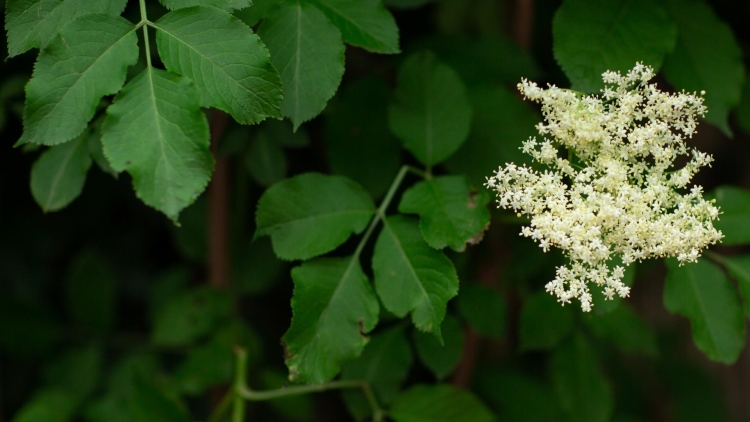
Elderberry (Sambucus canadensis) is a deciduous shrub that is native to North America. It typically grows to a height of 6-12 feet and has opposite, compound leaves with 5-9 leaflets. The flowers are small and white, borne in large, flat-topped clusters. The berries are dark purple or black and have a sweet-tart flavor. Elderberry is often used in jams, jellies, and pies. It can also be made into wine or cordials. Elderberry is rich in vitamins A and C, and it also contains antioxidants that can boost the immune system. In addition, elderberry has been traditionally used to treat colds and flu.
- From Zones 4 – 9.
- These shrubs are found growing wild near ditches and stream beds.
- Large clumps of fruits attract a variety of birds and make a great pie.
Blackhaw (V. prunifolium)
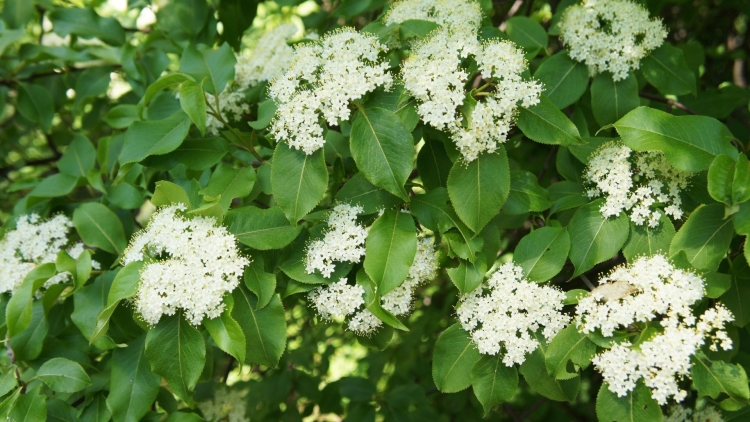
Blackhaw (V. prunifolium) is a deciduous shrub or small tree that is native to the eastern United States. Blackhaw typically grows to a height of 15-20 feet, with a spread of 10-15 feet. The leaves are alternate, simple, and ovate-shaped, with a serrated margin. The leaves are dark green in color and turn yellow-brown in the fall. The flowers are white, clustered, and have five petals each. The fruit is a black drupe that ripens in the fall. Blackhaw is often used as an ornamental plant in landscaping, due to its attractive flowers and fruits. Blackhaw is also valuable to wildlife, as it provides food and shelter for many birds and animals.
Withe-rod (V. cassinoides)
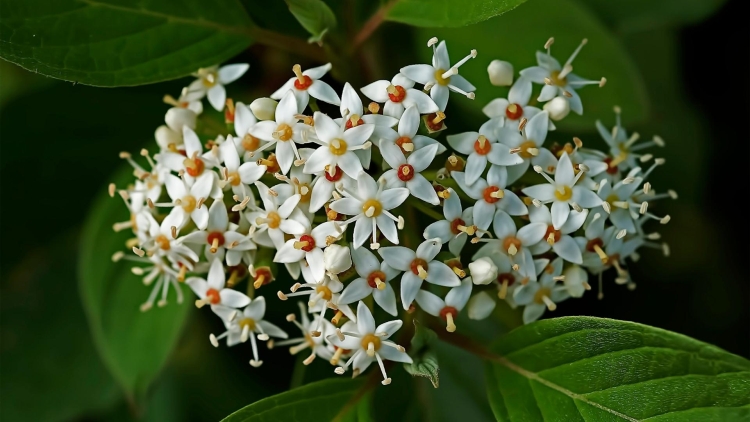
Viburnum cassinoides (also known as hobblebush or withe-rod) is a North American native shrub that ranges from Nova Scotia to Minnesota and south to Georgia and Arkansas. This deciduous shrub grows 6-12 feet tall and just as wide, with large, dark green leaves that turn reddish-purple in the fall. The flat-topped clusters of white flowers bloom in June, followed by bright red fruits that ripen in late summer and are enjoyed by songbirds. V. cassinoides grows best in full sun to partial shade and prefers moist, well-drained soils, but it is quite tolerant of different conditions. This adaptable shrub is a good choice for naturalizing areas or for use as a screening plant.
Possum haw (V. nudum)
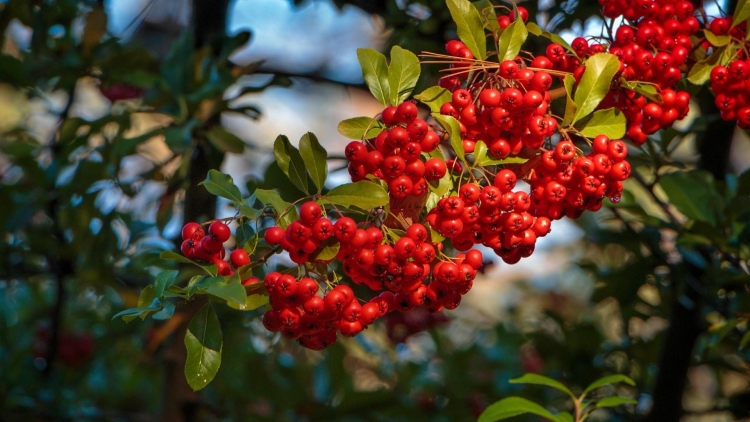
Possum haw (V. nudum) is a deciduous shrub or small tree that is native to the southeastern United States. It typically grows to a height of 15-20 feet and has glossy green leaves that are 3-6 inches long. The flowers are white and borne in clusters, and the fruit is a bright red berry that is beloved by birds. Possum haw is often used as an ornamental plant, but it can also be used in the landscape to provide habitat for wildlife. It is tolerant of a wide range of soil types and prefers full sun to partial shade. Possum haw is an easy plant to grow and care for, making it an excellent choice for beginner gardeners.
Summary
There are several native shrubs of the northeast that grow throughout the region, be sure to check with local garden centers. Remember, it is unlawful to dig these shrubs of the northeast from the wild without the land owner’s permission. Native shrubs of the northeast offer more of what native wildlife needs. They also are more adaptable to the regions severe changes in weather and tolerate pests more so than exotic plants will.
